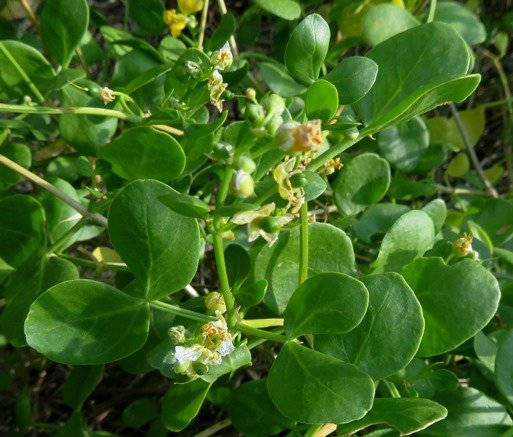Zygophyllum foetidum leaflet variability

Author: Ivan Lätti
Photographer: Thabo Maphisa
The obliquely rounded, twin leaflets of Zygophyllum foetidum grow without petiolules (leaflet stalks), while the long petiole (leaf stalk), is straight and grooved on top.
The skew leaflet midribs have few pale cream, lateral veins ascending from them and slightly recessed upon the upper surfaces. These veins curve in upon the bright green blades that are mostly about flat, soft and fleshy. Leaflet margins are entire. The veins dont reach them visibly.
It bears pondering how leaflets can all differ, while still be recognised without difficulty as belonging to a particular species. Even ones uniqueness is standardised within specific limits, a principle holding for plants, people and all else that lives. The unseen working of the genetic endowment of every species sustains both specific identity (the standard) and individual differences (the uniqueness).
Speciation capitalises upon individual differences favoured in particular environments. Environments always impact on all species by allowing some to procreate and flourish, others to suffer and die without offspring. As species spread geographically, they confront different challenges that become accentuated in the retained attributes of their offspring over generations.
Back to the particular plant, the specimen of the moment, but real, live participant in the enormous carnival of events that makes up ongoing evolution on earth and who knows where else:
Small green fruits are visible upon calyx bases, sometimes with wrinkled petals lingering as well. During the early development stages the fruits are smoothly rounded. When fully developed and drying, they acquire five longitudinal ridges (Vlok and Schutte-Vlok, 2015; Manning, 2009).

